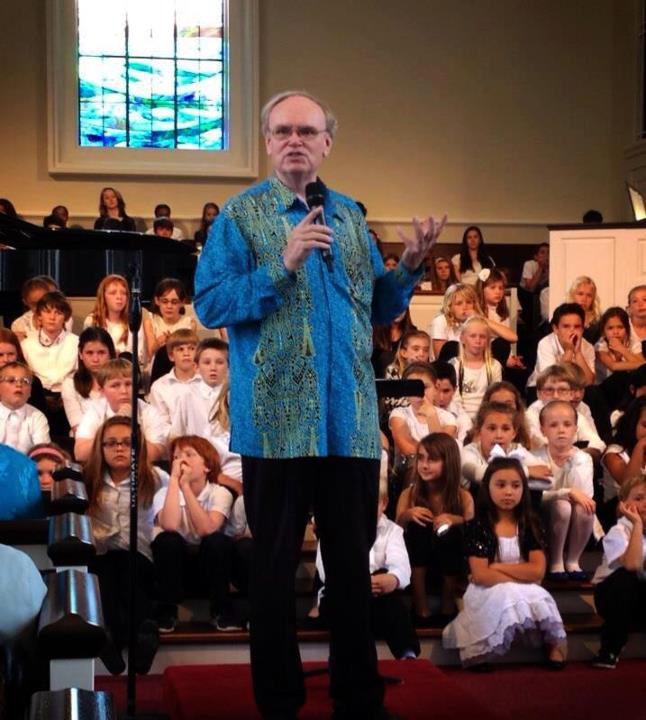Constructing Successful Student Choirs for the Second Quarter of the 21st Century
Part One – Daunting
Part Two – Beyond Mere Possibility
Part Three – Listening
Part Four – Leading
Part Five – Following
Part Six – Courage vs. Shyness
Part Seven – Collaborating
Part Eight – Goodbye to Me First
Part Nine – Choral Music … Much More Than Singing
Part Ten – Revealing Riches and Building Lives
Collaborating
The freeway construction happening on my daily commute involves dozens of companies, providers, and subcontractors. By the hundreds, pieces of huge and exceedingly costly equipment move around the construction zone every day and sometimes throughout the wee hours of the morning. Thousands of skilled workers are employed for very specific and highly specialized assignments. As messy, cluttered, chaotic, and unsightly as the construction site appears, the organizational excellence going on here is mind-boggling. The project as a whole is a $1.2 billion work of art, converging thousands of smaller work’s excellence to contribute to the carefully engineered whole.
Similarly, building and sustaining a strong student choir is an involved series of tasks requiring that many moving parts come together with efficiency, energy, and even the appearance of a certain degree of ease. Why the appearance of ease? That’s because the students – and, in most cases, their parents – need to feel they are entering a zone where there is time for relaxed interaction, space for knowing new friends, a place of peace, calmness, and affirmation. If the experience for the student feels as complex and demanding as it is for the leadership who planned it, the whole “choir thing” may seem too uptight, too pressurized, too confusing, too overwhelming.
As leaders, we must work hard behind the scenes to make it all seem simpler and more relaxed than it actually is. The same dynamic is true when we invite a group of friends over to our house for dinner. Do we really want them to see, feel and sense all the work and perhaps pressure that went into preparing the meal, setting the table, and making sure all the details were accomplished with excellence? As hosts of dinner gatherings in our homes, we need to take on a new role when the guests arrive, the fun of hospitality and friendship to pair with the ongoing efficiency. When we put in that kind of prep work on the front end of our events and rehearsals, the students are then able to come into the community, take a deep breath, relax, enjoy being together, and give their best efforts and energy to the immediate task at hand. Add the components of musical excellence achieved in a pleasant, friend-filled, joyful atmosphere, and we all know how positive an experience it can be!
I was recently asked by a colleague to discuss the current dearth of strong leadership in the 21st Century. The question went something like this: “What is the biggest cause – or at least one of the biggest causes – of ineffective leadership in 2024?
Before launching into why leadership often fails, we probably should clarify that “ineffective leadership” is actually an oxymoron, because one who is ineffective is not really leading at all, or at least not leading as hoped. One does not need to look very far to spot “ineffective leadership” in our culture. It’s happening all around us — in business, education, politics on every level, churches, homeowners’ associations, school boards, families, organizations for the arts, professional sports, and entertainment.
My views of effective and ineffective leaders do not come with empirical research, official surveys, or statistical analysis, although all these are helpful. My response is derived from being a paid church staff member since I was in high school (thus, 55 years) and over 34 years of leading a national nonprofit. Of course, these experiences were/are also happening coterminously, so I was/am viewing leadership styles from various angles. What follows is an analysis from my professional and personal experiences; thus, it is rather antidotal. Also added into this mix of experience is watching my own adult children and their spouses each climb professional ladders in their chosen fields (banking, entrepreneurism, events planning, staffing, and public relations). I also, like many of you, watch both positive and cringeworthy leadership far-flung by various news cycles and on social media.
The most substantial and costly failures in leadership I have observed have been brought about because the designated leader (chairman, choir director, superintendent, mayor, coach, politician, CEO, pastor) failed to properly call forth, align, blend, and implement the substantial resources already gathered closely around him or her. In other words, the weakest leaders I have observed are those who do not properly engage others for the help they so desperately need. Whether its pride, wanting too much control over every detail, arrogance, fear of failure, fear of success (and yes, that is a thing for some “leaders;” some are equally terrified of failure and success … a sure recipe for paralysis … fear of criticism, unwillingness to risk, trying to lead from the rear (also known as herding cats), thin skin, or not knowing how to ask for help … these unresolved issues are the perps for leadership murderer in the first degree. When we fail to engage the rich supply of human resources around us, the next thing we soon notice is that finances become problematic, as well. When that’s the ongoing reality, we then think we have the best excuse in the world to do little or nothing: “We can’t afford it.”
Of course, we will not solve the issue of weak leadership in one article or even in this series of articles. However, if these readings will cause all of us to regularly look long and deep into the talent resources lying around our places untapped, unchanneled, unchallenged, unused, and then engage those resourceful people, we will have already become far better leaders than we were before.
Business as usual is not going to meet the challenges of this century. In fact, business as usual will not even get us to 2030, much less to 2099. When we are willing to stretch ourselves, redefine roles, recruit the help we need and take some healthy calculated risks, only then will we begin to meet the challenge of 21st Century leadership.
Happy singing, and happy building a wildly thriving student choir!
Randy Edwards
[email protected]










